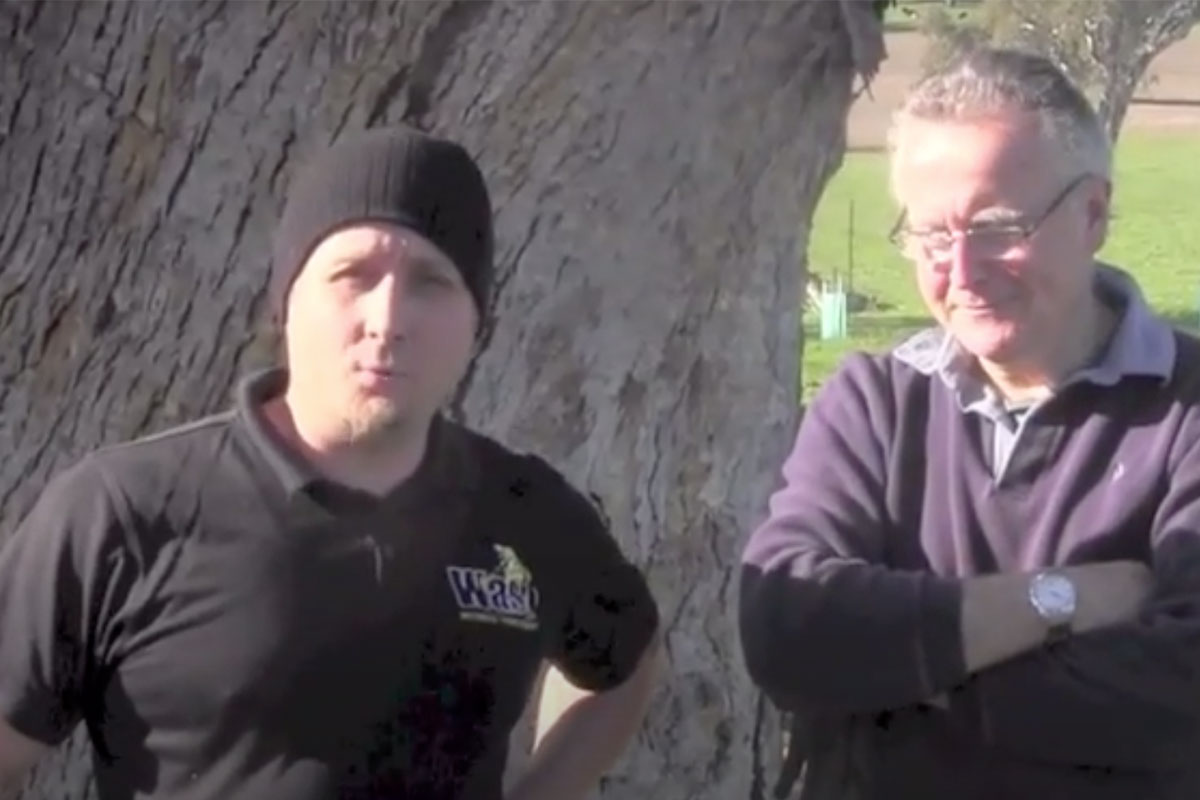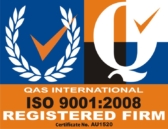The WASP Blasting Story
WASP Blasting - specialists in commercial and industrial abrasive blasting and sandblasting, surface preparation and specialist coatings application in Melbourne - was formed 30 odd years ago in the late 1980s, in the asbestos and HAZMAT removal industry in Australia.
Later, for a decade in the 90’s in Europe, where we project managed and coordinated large and prestigious industrial wet abrasive blasting contracts.
Wet Abrasive Blasting is also known as Vapour Blasting, Slurry Blasting, and sometimes not entirely accurately advertised as “Dustless”Blasting.

Toby Monaghan (left) has been in the media blasting industry since the late 1980s.
We believe - like many other health and safety and environmental professionals , and especially in the current commercial environment where silica and other hazardous types of dust are a massive issue both on site and deadly to those exposed - that wet abrasive blasting is the way of the future in abrasive surface preparation.
Our high end dedicated wet blasting systems prove themselves time and time again as the preferred alternative in a vast range of situations and sensitive situations.
On returning to Australia, where dedicated wet blasting systems were virtually unknown, we quickly gained a solid reputation with our clients and became renowned as a company that could perform the kind of work that a lot of conventional surface preparation and blasting companies could not.
This was particularly relevant in the area of large scale industrial HAZMAT, paint and chemical contamination removal and work in sensitive environments, due to the dust and waste mitigating properties of our systems, as well as our long background in contamination containment , encapsulation, materials removal and management.
We now continuously perform large scale protective coatings, corrosion removal, concrete preparation and blasting works both in Melbourne and interstate.
We've done work for The Australian Defence Force, The Melbourne Metro Tunnel/ Cross Yarra Partnership, Several Melbourne Universities and Level Crossing removal Projects and for the Top Tier”” construction companies to name a few.
But, we don’t just wet blast…
We do all kinds of surface preparation and specialist coating applications.
If you have a surface that needs to be profiled, cleaned or prepared, we will find a way to do it if we don’t already service it through our many blasting applications.
Our services also include:
- conventional abrasive blasting (commonly referred to as “sand”-blasting)
- concrete steel shot profiling and grinding
- hot and cold high and low-pressure water blasting and surface cleaning
- scabbling and needle gun descaling
- chemical paint stripping for heritage buildings and facades
- delicate substrate rejuvenation
- specialised coatings application by professional applicators with Quality Assured inspectors and testers
And the list goes on...
But, one more thing…
Good planets are hard to find and we like the one we live on. We want it to be there for our kids and future generations.
Abrasive blasting and coatings removal can be a very environmentally-intrusive process if not done with as much respect as possible.
This is especially vital when blasting or removing hazardous materials.
We prefer to use wet blasting systems when practical, as they massively reduce dust and use around ½ the amount of blasting material that ends up going landfill.
We also completely comply with all environmental standards of any of our surface prep systems in Melbourne via our EPA regulated waste disposal and containment practices and environmental policy, and recycle and reuse our materials wherever possible.
In our efforts to care for the environment and promote environmental awareness, the WASP boys (and their kids) take time out from work to plant trees to revegetate areas that need it and boost weak, natural habitats to try, in some small way, to give a bit back of what we take every day for granted.
We also love, support and volunteer our services to our favourite NGO SEA SHEPHERD whenever they need a hand.
Sandblasting is a process of using compressed air to propel small abrasive particles at high speeds onto a surface to remove rust, paint, or other coatings. The abrasive particles can be made of various materials such as sand, steel grit, glass beads, or aluminum oxide. The high-pressure air stream dislodges the unwanted material from the surface leaving it clean and ready for further processing.
Wet sandblasting is a process similar to regular sandblasting, but with the addition of water to the abrasive mixture. The water helps to reduce the amount of dust and heat generated during the process, making it safer and more efficient. Wet sandblasting is often used for delicate surfaces or in areas where dust and debris need to be kept to a minimum.
Yes, sandblasting can remove galvanizing from a surface. Galvanizing is a process of coating a metal surface with a layer of zinc to protect it from corrosion. Sandblasting can remove this layer of zinc along with any rust or paint on the surface.
The choice of sandblasting media depends on the surface to be cleaned and the desired outcome. For example, glass beads are often used for delicate surfaces while steel grit is suitable for heavy-duty applications. It is important to choose the right media to avoid damaging the surface or creating unwanted texture.
Yes, sandblasting is an effective method of removing paint from a surface. The abrasive particles dislodge the paint from the surface leaving it clean and ready for further processing.
Sandblasting is done for various reasons such as to remove rust, paint, or other coatings from a surface, to prepare a surface for further processing, to create texture on a surface, or to clean and maintain equipment.
Yes, aluminum can be sandblasted, but care must be taken to avoid damaging the surface. It is important to choose the right media and the right pressure to avoid pitting or other damage to the surface.
Sandblasting timber is not recommended as it can damage the surface and create unwanted texture. Other methods such as sanding or chemical stripping are more suitable for removing paint or other coatings from timber.
The main difference between sandblasting and soda blasting is the type of media used. Sandblasting uses abrasive particles such as sand or steel grit to remove coatings from a surface, while soda blasting uses bicarbonate of soda to clean and remove paint from a surface. Soda blasting is a gentler method than sandblasting and is often used for delicate surfaces such as automotive parts or sculptures.


